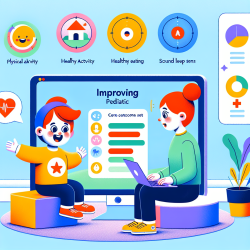Understanding Walkability: A Tool for Practitioners
The research study titled "Walk Score, Transportation Mode Choice, and Walking Among French Adults: A GPS, Accelerometer, and Mobility Survey Study" provides valuable insights into the relationship between neighborhood walkability and walking behaviors. This study, conducted in Paris, France, explores how the Walk Score of a neighborhood can influence transportation mode choices and physical activity levels among adults. As practitioners in the field of special education and therapy services, understanding these dynamics can help improve our approach to promoting physical activity and well-being among students and clients.
Key Findings and Implications
The study revealed that walkable neighborhoods, characterized by high Walk Scores, were associated with increased odds of walking trips. Specifically, the odds of walking were 3.48 times higher when the trip origin was in a "Walker's Paradise" compared to less walkable neighborhoods. This suggests that creating or enhancing walkable environments can significantly boost physical activity levels.
For practitioners, these findings emphasize the importance of considering the built environment when developing programs aimed at increasing physical activity. Incorporating walkability assessments into program planning can help identify areas where interventions might be most effective.
Practical Applications for Practitioners
- Program Development: Use Walk Score data to identify neighborhoods with low walkability and target them for interventions that encourage walking and physical activity.
- Collaboration with Urban Planners: Engage with local urban planners to advocate for the development of walkable neighborhoods, which can support healthier lifestyles.
- Personalized Recommendations: Provide clients with information about nearby walkable areas to encourage them to incorporate walking into their daily routines.
Encouraging Further Research
While the study provides robust evidence of the benefits of walkable neighborhoods, it also highlights the need for further research. Practitioners are encouraged to explore how these findings can be applied in different geographic contexts and among diverse populations. Understanding the specific needs and preferences of various groups can lead to more tailored and effective interventions.
Additionally, future research could explore the impact of walkability on other health outcomes, such as mental health and social well-being, providing a more comprehensive view of the benefits of walkable environments.
Conclusion
Walkable neighborhoods offer a promising avenue for promoting physical activity and enhancing overall well-being. By integrating insights from the study into practice, practitioners can play a pivotal role in fostering healthier communities. For those interested in delving deeper into the research, the original study offers a wealth of information and can be accessed here: Walk Score, Transportation Mode Choice, and Walking Among French Adults: A GPS, Accelerometer, and Mobility Survey Study.










